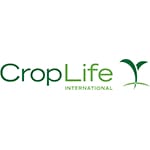Reducing Pesticide Residue Levels
HIGHLIGHTS
- We’re working with Croplife Vietnam to better understand farmers’ behavior around pesticide usage, which currently contributes to high chemical residue levels in agricultural produce.
- Through a deep dive behavioral study we identified various behavioral barriers impeding appropriate use of agrochemicals.
- We are preparing for a second phase of work to design and test behavioral interventions to reduce excess chemical residue levels.
The Challenge
There is growing concern in Vietnam that incorrect use of pesticides is causing high levels of pesticide residues in the final crop output. In recent years, pesticide residue levels have increasingly exceeded the limits set for trade and consumption of the product, leading to the rejection of export shipments and public health concerns around safe consumption. The practices that may lead to high pesticide residues include, frequent application of pesticides, application of pesticides in quantities higher than prescribed amounts, application of pesticides too soon before harvest, and using/mixing inappropriate chemicals.
Our Approach
With funding support from CropLife Asia, we worked with CropLife Vietnam and the Institute for Policy and Strategy for Agriculture and Rural Development (IPSARD) to diagnose behavioral barriers faced by farmers in practicing safe pesticide usage.
Supported by a local research team from IPSARD, we conducted in-depth interviews with key supply chain stakeholders and completed a large-scale survey with tea, mango, rice, and orange cultivators, as well as relevant farm stakeholders (retailers, government extension officers, export agencies, etc.).
We also conducted a literature review and in-depth interviews with key stakeholders. We used the information gathered through these activities to identify behavioral barriers impeding appropriate pesticide use.
Results
We uncovered several key behavioral barriers that may be contributing to high pesticide residue levels. First, farmers (regardless of whether they are producing for export or domestic markets) never receive any feedback on their crop residue levels. Because residue testing generally only happens on export crops at the aggregate level, the salience of pesticide residue issues is very low among farmers.
Second, farmers tend to tunnel on two primary crop characteristics: yield and appearance (color, size, uniformity). These characteristics are most relevant for farmer income, and farmers tend to prioritize measures, such as additional pesticide applications, which preserve these two factors.
Third, because farmers do not systematically track and record their pesticide usage throughout the growing season, they tend to underestimate their overall level of pesticide usage.
Finally, while there are a number of practices and guidelines farmers should follow for proper pesticide application (for example, proper mixing ratios, frequency of application, pre-harvest interval, etc.), farmers often follow some but not all of these guidelines.
Takeaway
Our partners are keen to build on the behavioral insights identified to reduce excess pesticide residue levels. We are currently preparing for a second phase of work, during which we’ll design and test scalable solutions to address this challenge.
Interested in learning more about this work applying behavioral science to a crucial social problem? Reach out to us at info@ideas42.org or tweet at @ideas42 to join the conversation.
Partners










